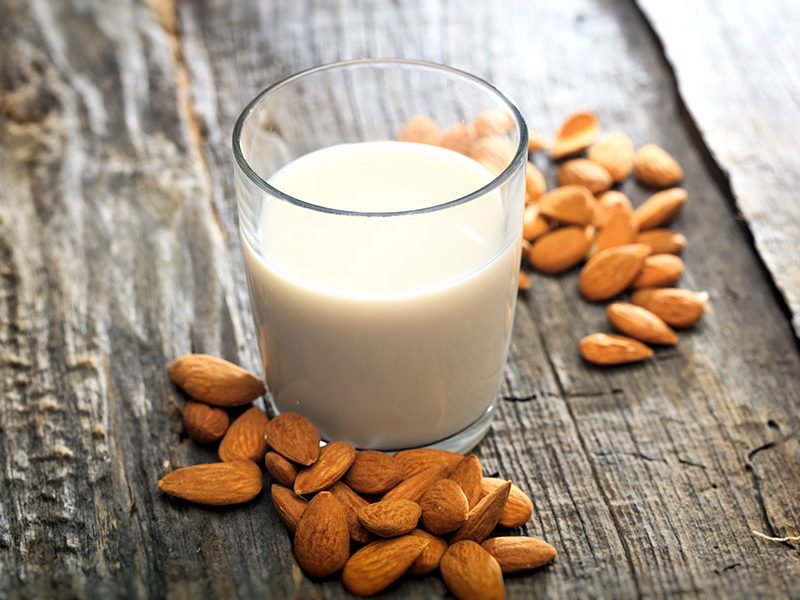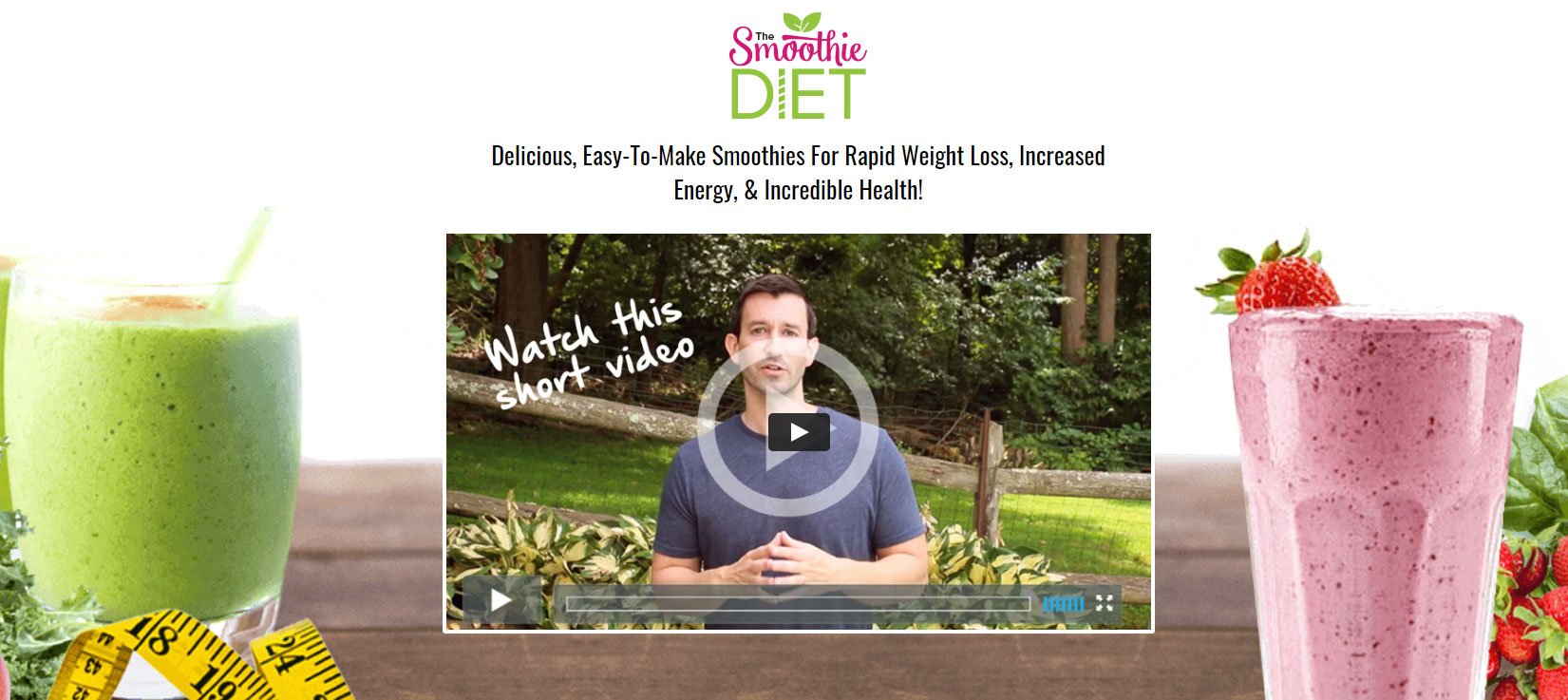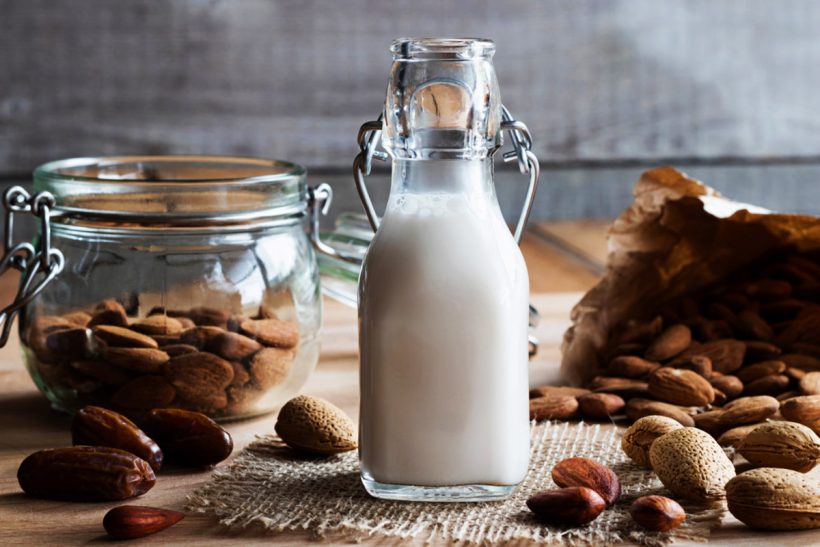Make almond milk
Almond milk is considered a healthy alternative to cow's milk, which is not well tolerated by many people.
The little snag is that commercially, almond milk (or rather almond juice, the name "milk" being forbidden for any vegetable drink) contains a host of other ingredients, whereas basically, there should only be water and almonds.
In fact, in most products and regardless of the brand, almonds are only present in about 3% of the drink...when you think that a carton of vegetable milk is sold for between 1 and 2$...
This is why some nutrition professionals are insisting on almond milk, which may contain :
• Calcium carbonate: a supplement that increases the calcium content of almond milk.
• Sunflower lecithin: a fatty substance extracted from sunflowers.
• Potassium citrate: a food additive that helps regulate acidity.
• Carrageenan (a thickening agent) which allows the juice to remain stable on the shelf and maintain a consistent texture.
• And many others...
A flavoured almond milk will most likely contain added sugars. You will see them in the ingredient list as "cane sugar", "honey" or other sweetener. Dietary experts advise us to limit our intake of added sugars in order to maintain a healthy weight.
Today we will look at how to simply make our own almond milk, after reviewing the nutritional composition and benefits of almond juice.
COMPOSITION NUTRITIONNELLE
Carbohydrates
There is only one gram of carbohydrates in unsweetened almond milk. Carbohydrates provide 4 calories per gram. However, if you buy flavoured or sweetened milks, the carbohydrates and calories increase.
- There are about 45 calories and 6 grams of carbohydrates in a 100ml glass of vanilla almond milk.
- There are about 25 calories and 2 grams of carbohydrates in a 100ml glass of unsweetened almond milk.
- There are 60 calories and 10 grams of carbohydrates in a 100ml glass of chocolate almond milk.
Unsweetened almond milk has a glycemic index (GI) of 25, making it a low GI food.
Lipids
There is 2g of fat on average in 100ml of almond milk. Each gram of fat provides nine calories, so that's about 20 calories of fat in a glass of unsweetened almond milk.
Most of the fat in almond milk comes from monounsaturated fats, while a small portion comes from polyunsaturated fats. Unsaturated fats are considered "good" fats because they can help raise HDL cholesterol levels in the blood and improve heart health.
But why is there so little fat when almonds, in their raw form, are full of it? Quite simply because the almond milk that we buy, again, is made up of over 90% water and about 3% almonds...no wonder it's so low in calories.
Proteins in almond milk
With about 1/2g of protein in a glass of almond milk, you're not going to convince your bodybuilder friend to turn away from classic cow's milk! Indeed, we know that proteins help your body to develop and maintain its muscle mass. Eating foods containing protein also helps your bones, cartilage, skin and hair stay healthy.
By way of comparison, a glass of milk provides about 8 grams of protein, regardless of its fat content. However, almonds have a rather good protein profile with their 2g per 10g! But the problem remains the same, what do you want to do with an industrial drink made up of 2% "raw" product?
Wouldn't it be better to make your own homemade almond milk? I think you know the answer to this question!

WHY MAKE YOUR OWN ALMOND MILK
Almond milk remains a superb and healthy alternative to cow's milk for people who are lactose intolerant or sensitive to dairy products.
It's also a great ally for people who watch their waist circumference, as unsweetened almond milk is a smart way to flavour coffee or enjoy its cereal. The calories contained in almond milk are much lower than many sweeteners or skim/low-fat milk.
Almond milk is a lower glycemic index alternative to rice milk and does not cause hormonal problems like soy milk. It can be used instead of regular milk in recipes and baking. It is easy to make and tastes good.
But like almost any food or drink, almond milk is both cheaper and healthier when you make it yourself. That's for sure!
In fact the calculation is quickly done, at 15$ per kilo of organic almonds, you will be able to make about 10L of homemade almond milk. This represents about 10 bricks of almond juice in shops which costs 1$ each on average. Not only do you earn a few precious euros, but what about the nutritional quality!
In short, almond milk is :
• a very low calorie drink
• a 100% vegetarian/vegan drink that fits into any diet (and ideal for cooking)
• free of lactose which makes it more digestible than cow's milk.
• a low GI drink that is cholesterol-free
HOW TO MAKE HOMEMADE ALMOND MILK?
Don't worry, this almond milk recipe is easy to make at home in just a few minutes! It is customizable, dairy free, paleo, vegan and most of all, delicious!
This recipe will produce a creamy almond milk that is much better than store-bought almond milk (in my opinion). Most store-bought milks use only 2% almonds, so they are low in calories, but you are essentially buying water in a box. If you prefer this type of almond milk, you can reduce the amount of almonds at ¼ or ½ cup and use the recipe above.
Ingredients :
• 140g of organic almonds
• 1L of filtered water
• a tiny pinch of salt
• ½ teaspoon vanilla extract or ½ vanilla bean (optional)
• sweetener of your choice (and to taste), example: 2 dates, 1 tablespoon of maple syrup or honey syrup
Preparation :
1. Soak the almonds for at least 12 hours in water filtered with 1/2 teaspoon of sea salt. This is an important step because it breaks down the phytic acid and enzyme inhibitors in the almonds. The longer the almonds are soaked, the creamier the milk will be.
2. Drain and rinse the almonds. Do not save this water for reuse, as it contains phytic acid and is best discarded.
3. In a blender, combine the almonds and 1L of filtered water with vanilla, sweeteners or other optional ingredients.
4. Blend for 2 to 3 minutes until smooth and creamy.
5. Filter the mixture into a large bowl using a filter bag (a fine, clean kitchen towel will also do).
6. Pour into a glass jar or pitcher and store in the refrigerator for up to four days.
Tips
To reuse the dough: keep the almond pulp, place it on a cookie sheet and dry in the oven over low heat until completely dry. Blend to make almond flour, which can be used in recipes in place of traditional flour. Alternatively, store almond pulp in the refrigerator for use in pastries or smoothies.
Vary the flavors of your almond milk: add a handful of organic strawberries for a strawberry almond milk, 1 to 2 spoonfuls of cocoa powder for an intense chocolate milk, or any other flavor that pleases you.
This recipe will keep for about 4 days in the refrigerator.
If you want to see all this in pictures, I advise you to watch this video which shows you the process with 9 different types of vegetable milk!
For a super simple and delicious smoothie, put 300g of your homemade almond milk with 2 bananas and mix it all together, a treat!
You can use your almond milk as a substitute for cow's milk in most recipes, use a 1:1 ratio, I make for example my almond milk pancakes.


